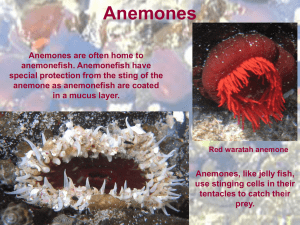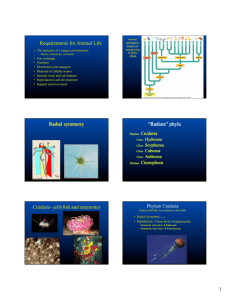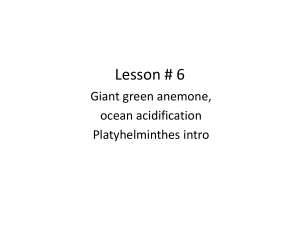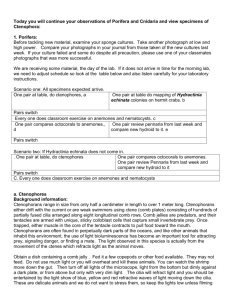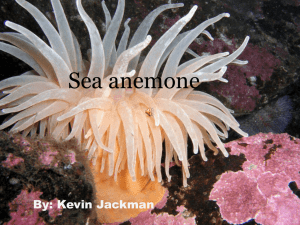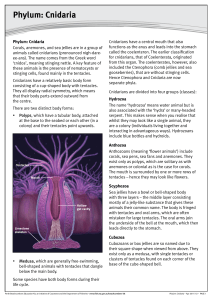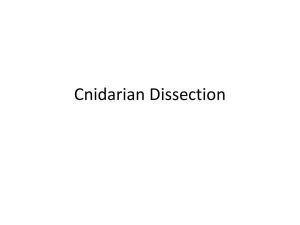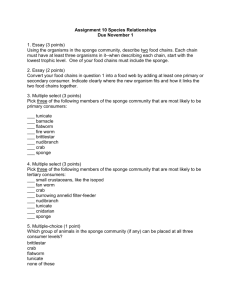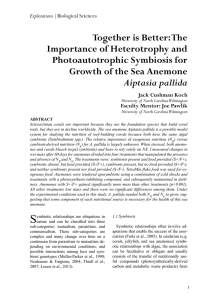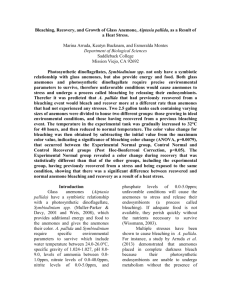Sea Anemones: Tide
advertisement
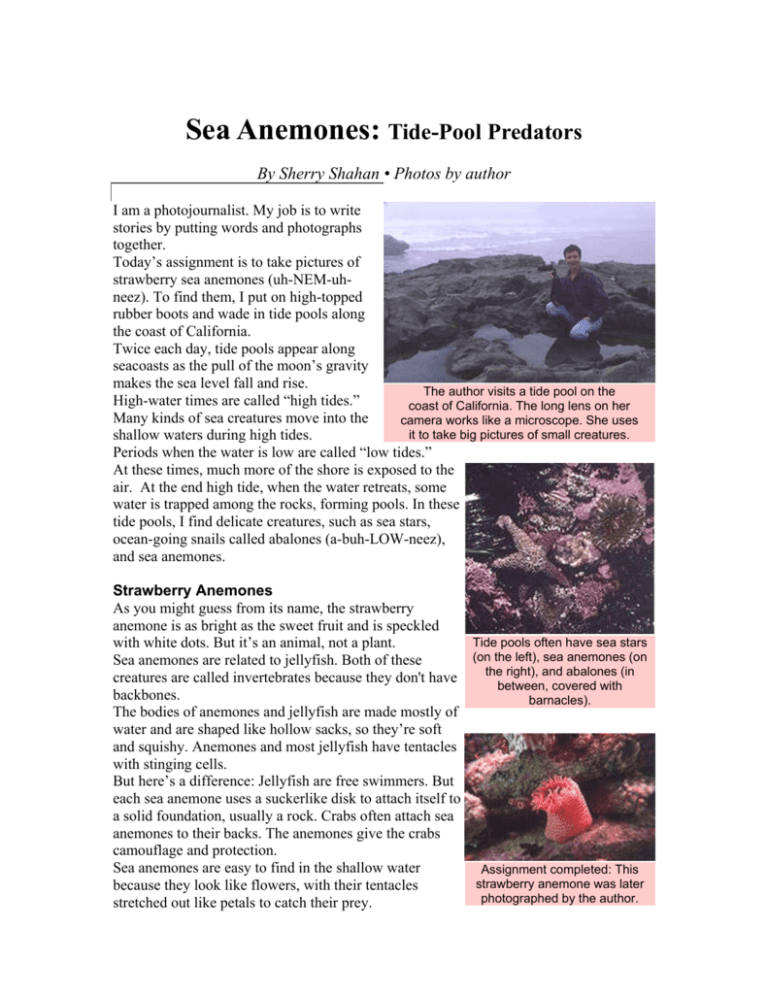
Sea Anemones: Tide-Pool Predators By Sherry Shahan • Photos by author I am a photojournalist. My job is to write stories by putting words and photographs together. Today’s assignment is to take pictures of strawberry sea anemones (uh-NEM-uhneez). To find them, I put on high-topped rubber boots and wade in tide pools along the coast of California. Twice each day, tide pools appear along seacoasts as the pull of the moon’s gravity makes the sea level fall and rise. The author visits a tide pool on the High-water times are called “high tides.” coast of California. The long lens on her Many kinds of sea creatures move into the camera works like a microscope. She uses it to take big pictures of small creatures. shallow waters during high tides. Periods when the water is low are called “low tides.” At these times, much more of the shore is exposed to the air. At the end high tide, when the water retreats, some water is trapped among the rocks, forming pools. In these tide pools, I find delicate creatures, such as sea stars, ocean-going snails called abalones (a-buh-LOW-neez), and sea anemones. Strawberry Anemones As you might guess from its name, the strawberry anemone is as bright as the sweet fruit and is speckled Tide pools often have sea stars with white dots. But it’s an animal, not a plant. (on the left), sea anemones (on Sea anemones are related to jellyfish. Both of these the right), and abalones (in creatures are called invertebrates because they don't have between, covered with backbones. barnacles). The bodies of anemones and jellyfish are made mostly of water and are shaped like hollow sacks, so they’re soft and squishy. Anemones and most jellyfish have tentacles with stinging cells. But here’s a difference: Jellyfish are free swimmers. But each sea anemone uses a suckerlike disk to attach itself to a solid foundation, usually a rock. Crabs often attach sea anemones to their backs. The anemones give the crabs camouflage and protection. Sea anemones are easy to find in the shallow water Assignment completed: This strawberry anemone was later because they look like flowers, with their tentacles photographed by the author. stretched out like petals to catch their prey. But anemones vary a lot, too. In my search for strawberry anemones, I wade through a shallow pool of trapped water. I spot a giant green anemone. With bluish-green tentacles fanned out, it’s the size of a saucer. Stinging Cells I’m careful when I brush my finger over an anemone’s sticky tentacles. The stickiness is caused by tiny stinging cells called nematocysts (NEM-uh-tuh-sists) lining the sides of the tentacles. Each nematocyst contains a barbed, threadlike tube. When something touches the capsule, it explodes and shoots out its tiny, harpoonlike tube. Usually, many nematocysts are triggered at the same time, shooting many barbs into whatever brushes past. In some types of anemones, the nematocysts inject poison—both to catch their prey and to protect the anemone from other predators. Some of these anemones can deliver painful, poisonous A giant green anemone sits underwater, stings. waiting to use its tentacles to capture But the green anemone’s stinging cells do not hurt prey. people. So even when many of the cells stick their barbs into my finger, it doesn’t hurt. It just makes the tentacle feel sticky. The green anemone preys on crabs, shrimp, snails, and other small animals that crawl or swim by. Once an anemone captures a meaty morsel, it pulls the prey toward its slitlike mouth. On a recent visit, I saw a green anemone swallow a shore crab. Then I watched as it spit out bits of crab shell. Tumbling Anemones Still searching for strawberry anemones, I see a green anemone creep along the tide-pool floor. To move, an anemone releases its sucker disk, then does a slow “somersault,” using its tentacles to flip over. Sea anemones don’t lay eggs or bear young. Instead, they split in two. These parts also divide. In time, the rocks may be covered by a blanket of anemones. Other anemones stay hidden. A narrow channel leads me to a ledge that sticks up out of the water. Using my macro lens—which is like having a microscope on the end of a camera—I focus on the shaded area under the rocky lip. Hidden from harsh sunlight and wave action, a colony of club-tipped anemones thrive. They are only one inch high and are topped with a flared crown of bright pink tentacles. This sea anemone has covered itself with seashells and pebbles The water seeping over the tops of my boots lets to protect itself from the sun until me know the tide has started to return. Soon the the tide covers it with water again. exposed rocks will be covered with lapping waves as the sea pushes its way toward high tide. I didn’t find any strawberry anemones today. But that’s OK. The tide pool will be back again.
